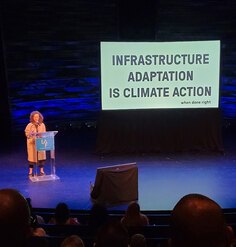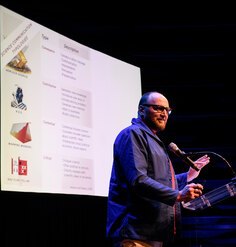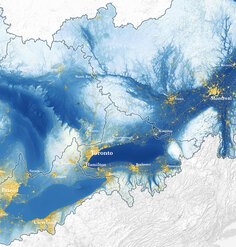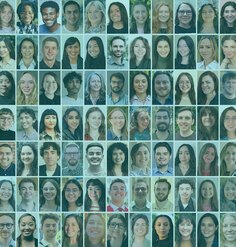Six Selected for 2024-25 LAF Fellowship for Innovation and Leadership
Five mid-career professionals and one recent LAF Olmsted Scholar will form the eighth cohort of LAF Fellows.
The Landscape Architecture Foundation (LAF) is delighted to introduce the 2024-2025 cohort of the LAF Fellowship for Innovation and Leadership. This transformative program, entering its eight year, is supported by donors to the LAF: 50 & Forward Campaign and a grant from the National Endowment for the Arts. Each of the selected participants will develop their leadership capacity and advance ideas that have the potential to create positive and impactful change in the profession, the environment, and humanity.
The mid-career LAF Fellows will each receive a $25,000 award and dedicate 12 weeks of time over the course of the coming year to pursuing their proposed project. Participating LAF Olmsted Scholars receive a $5,000 award to further their ideas in preparation for future fellowship, partnership, or funding opportunities. The fellowship consists of this project work, supported by facilitated discussions, critiques, intergenerational mentorship, and explorations of transformational leadership that occur during three 3-day residencies.
The 2024-25 fellowship year will commence in June 2024 and conclude in June 2025 with a final symposium to showcase their work. LAF is proud to make this investment in the people and ideas that will drive the future of landscape architecture, and we look forward to working with the cohort as they tackle important challenges.
Meet the 2024-2025 LAF Fellows
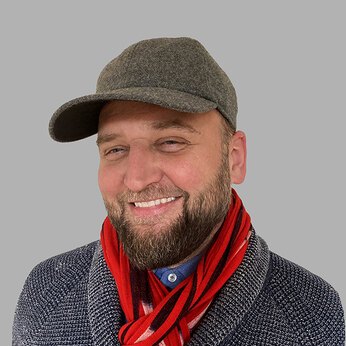
David Buckley Borden
Fuller Design Fellow
University of Oregon
Eugene, OR
Emergent Mutualism: Closing the Science-Communication Gap through Collaboration between Ecology and Design
This project will identify, develop, and articulate creative environmental-communication methods, models, and frameworks to answer the question, “How can interdisciplinary science-communication be re-imagined as a collaborative design process between landscape architects and ecologists?” The landscape architect’s role as an environmental communicator and educator is certainly nothing new. However, how the profession engages the scientific research community and then collaboratively educates the general public is worthy of inquiry, critical review, and the dissemination of evidence-based practice case studies. David’s fellowship project builds off his ongoing interdisciplinary collaborations with scientists at long-term ecological research sites, including the Harvard Forest in central Massachusetts and the HJ Andrews Experimental Forest in Oregon’s Western Cascades.
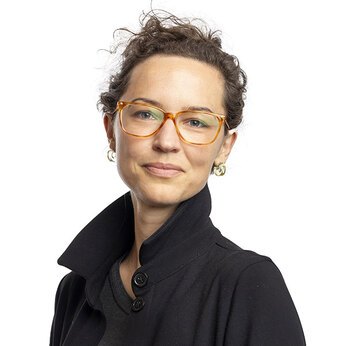
Anya Domlesky
Director of Research
SWA Group
Chicago, Illinois
Infrastructure, Rescripted: The Public Realm on a Mass Scale
Transportation space today dominates the public realm in the United States. Dallas, Texas’ urban land is typical; in aggregate, roadways fill 20% of the county’s land area. Park space—at half of that—fills 10%. Currently, we allot more than twice the area to transportation as we do to our commons. But we are also living in a moment of transition for transportation. Much of the land area currently occupied by port, river, rail, and road infrastructure will be obsolescing tomorrow. And since much of transportation space is publicly held, it can be adapted for uses with broader benefits, more reflective of public values. The profession has produced sterling individual infrastructure adaptation projects, but it needs to attend to the larger concept and the larger urban network to increase impact.
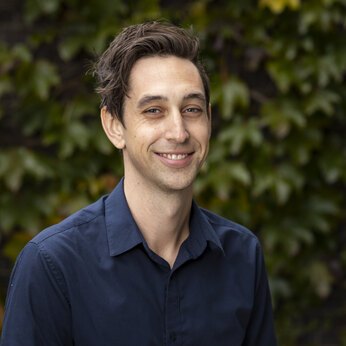
Aaron Hernandez
(2019 LAF Olmsted Scholar)
Associate
Reed Hilderbrand
Cambridge, Massachusetts
Toronto Policy Atlas: A Generalist’s Guide to Public Policy (For People Who Care About Landscapes and Environments)
Public policies affect every aspect of modern life. And yet, for many, the relationship between public policy and our daily lives remains opaque. Addressing today’s critical issues—ecosystem restoration, climate change adaptation, and in settler colonial states particularly, reconciliation with Indigenous peoples—will require transformative policy change and a citizenry that understands how policies influence shared landscapes and environments. Using Toronto as a case study, this project will visualize relationships between policy and landscape from the headwaters of the city’s rivers to the shores of Lake Ontario. By illuminating this "invisible infrastructure" of the physical environment, the Toronto Policy Atlas aims to support the political and institutional dimensions of landscape literacy—and asks readers to consider their agency as citizens.
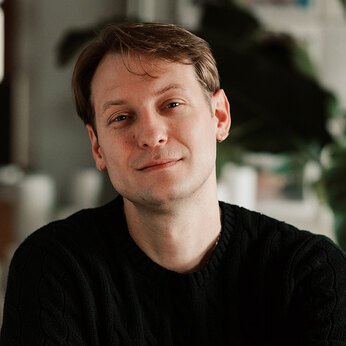
Brad Howe
Design Director
SCAPE
New York, New York
Landscapes are Learning Labs
Landscapes are Learning Labs will explore how landscape architects can advocate for and develop STEM curriculums as a part of each project. Promoting active participation and experiential learning, the work will create a Curriculum Playbook that provides resources to support making the physical landscape architecture project integral to K-12 education. It will also provide roadmaps to implement curriculums and establish a line of partnership between the landscape architect and educator—setting up a template for collaboration in curriculum development. Educating students through landscape participation will empower youth to emerge as future stewards and environmental advocates and forge educational partnerships to drive long-term social resilience in the communities where we design, work, and build.
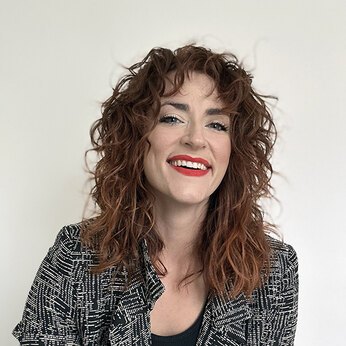
Forbes Lipschitz
Associate Professor
The Ohio State University
Columbus, Ohio
Feral Farms: Midwestern Recipes for Rewilding Agriculture
In response to the urgent need for sustainable, biodiverse, and community-centric food sources, the Feral Farms project will examine this central question: How can we effectively modify our diets and de-domesticate our landscapes while preserving cultural diversity and mitigating climate change? Feral Farms will document the experiences of food system rebels, including indigenous farmers, regenerative farmers, Black farmers, foragers, and hunters of wild game. Through a rich tapestry of regional case studies, this project demonstrates that rewilding agriculture is not just a theoretical aspiration but a potential reality. This research will culminate in a cartographic cookbook, providing recipes inspired by the culinary traditions of the Midwest while speculating on alternative agricultural futures for the region.
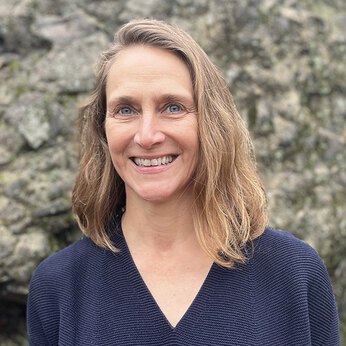
Amy Whitesides
Design Critic
Harvard University Graduate School of Design
Cambridge, Massachusetts
Toward a National Agro-forest
Agro-forestry is the practice of agriculture alongside and among forests, forest margins, and tree-crop species. It has the potential to support forest expansion and protection while advancing food security and economic stability locally. In the United States, agroforestry research and implementation are largely guided by individual landowners and best practice guidelines. This project investigates the potential to radically scale up current practices and create a nationally recognizable agro-forest. Opportunities for expanded models of collective land stewardship across boundaries from private farmland to publicly held forest lands will be investigated. Negotiating the complexity of regional collaboration is increasingly critical as regions seek to adapt to changing climate risks. Thus, the project aims to advance methods for landscape architects working on large-scale climate adaptation that requires multi-stakeholder participation.
THANK YOU TO OUR JURORS
- Natalia Beard, Principal, SWA Group
- Alma Du Solier, Studio Director, Hood Studio
- Nick Jabs, Sr Associate, PORT
- Alexis Landes, Managing Principal and Partner, SCAPE
- Lucinda Sanders, Lead Facilitator, LAF Fellowship for Innovation and Leadership / CEO and Partner, OLIN
- Samantha Solano, Assistant Professor, Landscape Architecture, U Mass Amherst
- Gary Sorge, Vice President, Community Development, Discipline Leader (Landscape Architecture), Stantec
